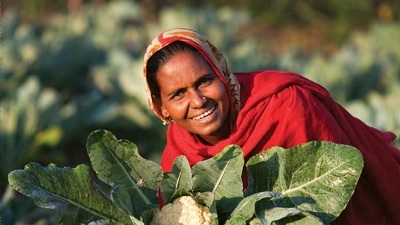Bangladesh experienced a uniform and steady decline in poverty rates between 2000 and 2010. Poverty declined 1.8% annually between 2000 and 2005, and 1.7% annually between 2005-2010.
There was a continuous decline in the number of poor people—from nearly 63 million in 2000, to 55 million in 2005, and then 47 million in 2010. Despite a growing population, the population of poor people declined by 26 percent in 10 years.
The Bangladesh Poverty Assessment shows that during the period 2000-2010 poverty reduction was closely linked to the growth in labor income and changes in demographics. Labor income, both formal and informal, was the dominant factor in higher incomes and lower poverty rates. Parallel to this, fertility rates have been steadily dropping over the last several decades which have resulted in lower dependency ratios thereby increasing income per-capita and reducing poverty.
The potential to benefit from the demographic dividend will continue in the short to medium term. But to continue to reap the benefits from the demographic changes, Bangladesh will need policies that respond to the needs of the growing population of young adults.
Main Policy Implications
To ease the labor market pressures caused by the demographic transition, Bangladesh will need to focus more attention to the skills development of a rapidly expanding labor force, including policies aimed at enhancing opportunities for overseas migration. Similarly, given the trends in female education outcomes and low rates of female labor force participation, a focus on creating ‘female-friendly’ jobs, work environments and labor policies will also help to facilitate a higher level of female participation in the labor force.
Moreover, moving forward, sustained poverty reduction will necessitate coordinated multi-sectoral action. Investments to raise agricultural productivity and growth in the demand for salaried work in the manufacturing and service sectors are crucial for maintaining growth in labor income. Bangladesh will also find itself at the cusp of an aging challenge in about 20 years. There is ample time to prepare, but Bangladesh will want to start the process of discussing programs and policies that can protect the elderly in a manner that is both fiscally sustainable and culturally appropriate.
The report suggests that, to be more effective, safety net programs need to be: better timed to more adequately address short-term needs, better targeted ensure that benefits are primarily received by the poor, and better tailored to meet the specific needs of the poor. Consolidation of safety net programs in Bangladesh along these three principles would improve efficiency and establish a solid foundation for increasing investments in safety net programs with increased benefit levels.
Furthermore, safety nets have gradually shifted from food transfers to cash transfers in recognition of the fact that the latter are more cost effective. Linking this larger pool of cash allowances to human development outcomes could prove a powerful formula for increasing human capital and for attaining further poverty reduction in the future. Particular emphasis needs to be placed on programs that focus on: early childhood development in ways that integrate health and nutrition services, pre-school education, early stimulation and learning; and also programs focused on building skills and improving the employability of poor youth.

